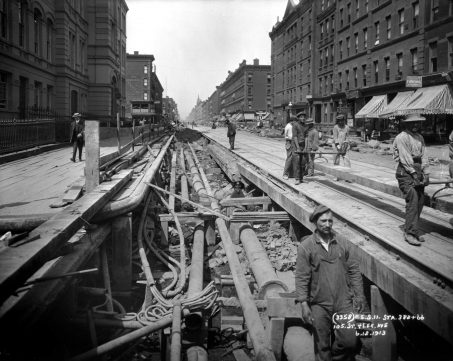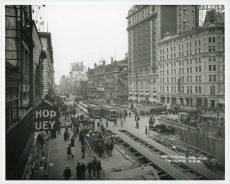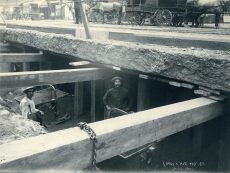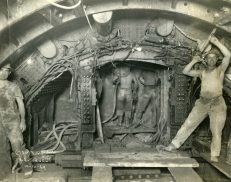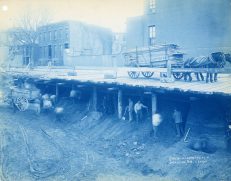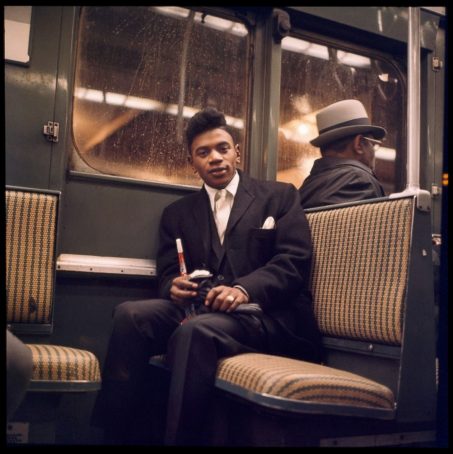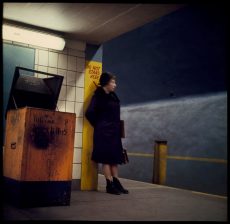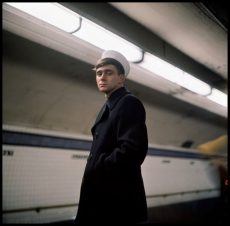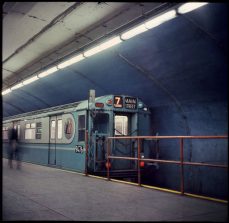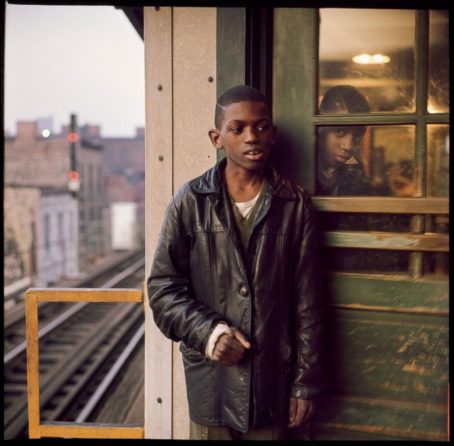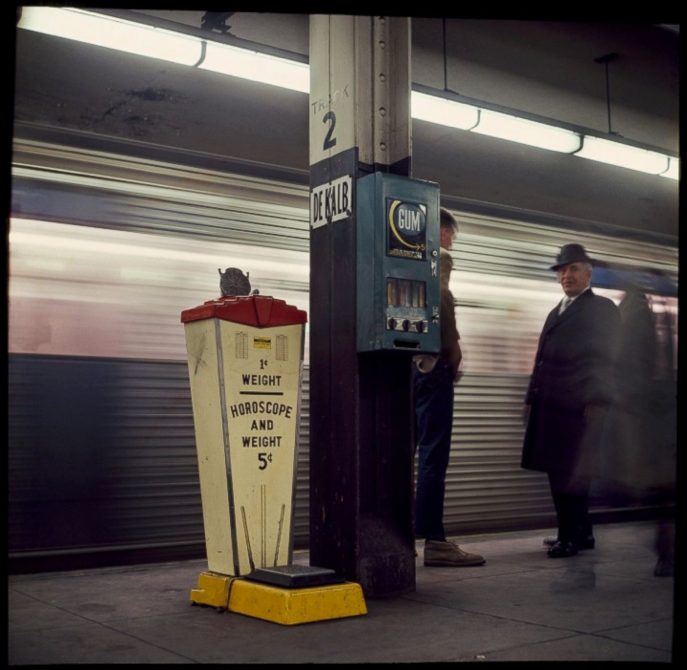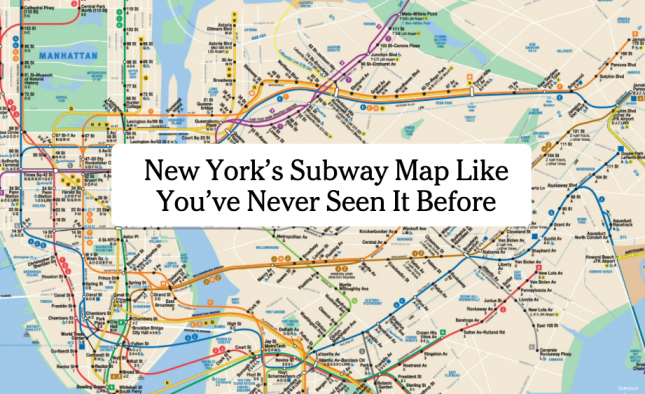Pierre Pullis had a photography studio on Fulton Street, in New York City, but he spent a lot of time working outside its walls. For about four decades in the first half of the 20th century, he lugged his camera to some rather inconvenient places around the city—including beneath its boulevards. Read more
Miscellaneous
Speaking American, by Josh Katz

Did you know that your answers to just a handful of questions can reveal where you grew up? In December 2013, Josh Katz released an interactive dialect quiz in the New York Times that became the most viewed page in the paper’s history. Now a graphics editor, Katz harnessed the overwhelming response to that quiz to create Speaking American, an extraordinary and beautiful tour through the American vernacular. Read more
Rare Vintage NYC Subway Trains, by Danny Lyon
Photographer Danny Lyon‘s images of New York City subway riders in 1966 were featured in an exhibit by MTA Arts & Design. Lyon has had a distinguished career as a photographer and filmmaker, most notably documenting the Civil Rights Movement and motorcycle gangs in the 1960s. Returning to New York City in late 1966, Lyon’s mother gave him the advice, “If you’re bored, just talk to someone on the subway.” Using a Rolleiflex camera and color transparency film, the images in “Underground: 1966” have never been publicly exhibited prior to this.
(via ABC News)
Seneca Village – The Lost Neighborhood Under New York’s Central Park
If you’ve been to New York, you’ve probably visited Central Park. But there’s a part of its story you won’t see. Read more
New York’s Subway Map Like You’ve Never Seen It Before
The city has changed drastically over the past 40 years, yet the MTA map designed in 1979 has largely endured. This New York subway map animation is the best thing you’ll see all day.
Brooklyn Streets Originally Native American Trails
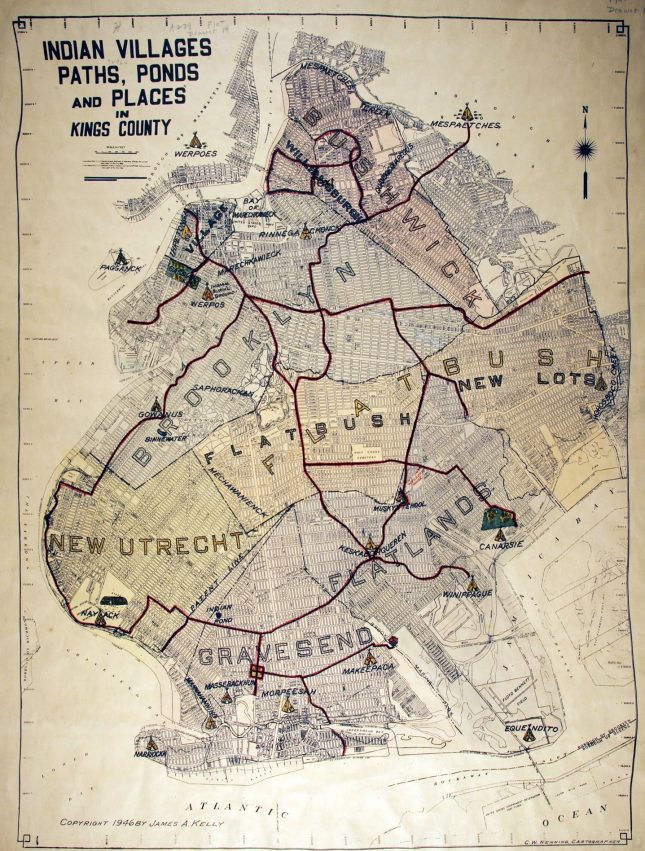 While we take for granted the paths and roads we use on a daily basis, it’s interesting to find out how they came to be. It’s not a new concept that paths worn by the comings and goings of early dwellers and subsequent settlers in a particular area became roads, streets and thoroughfares, often with names that reflect their beginnings. Brooklyn Heights Blog (via Viewing NYC) shares some insight into Brooklyn’s familiar roads that began as Native American trails on a 1946 map titled “Indian Villages, Paths, Ponds and Places in Kings County.”
While we take for granted the paths and roads we use on a daily basis, it’s interesting to find out how they came to be. It’s not a new concept that paths worn by the comings and goings of early dwellers and subsequent settlers in a particular area became roads, streets and thoroughfares, often with names that reflect their beginnings. Brooklyn Heights Blog (via Viewing NYC) shares some insight into Brooklyn’s familiar roads that began as Native American trails on a 1946 map titled “Indian Villages, Paths, Ponds and Places in Kings County.”
The map, which comes to us courtesy of the Brooklyn Historical Society, was published in 1946 by James A. Kelly, who was the Brooklyn Borough Historian at the time. It’s noted that “some of the trails that exist today as major thoroughfares, like Fulton Street, Flatbush Avenue and part of Atlantic Avenue.”
Logofonts, by Emanuele Abrate
Emanuele Abrate illustrates the typefaces used in some of the most famous brands.
